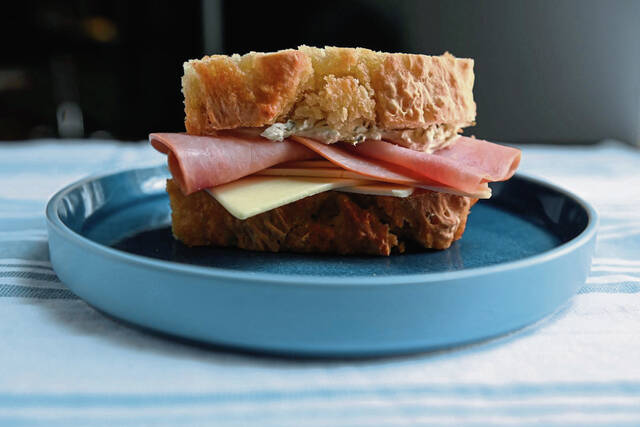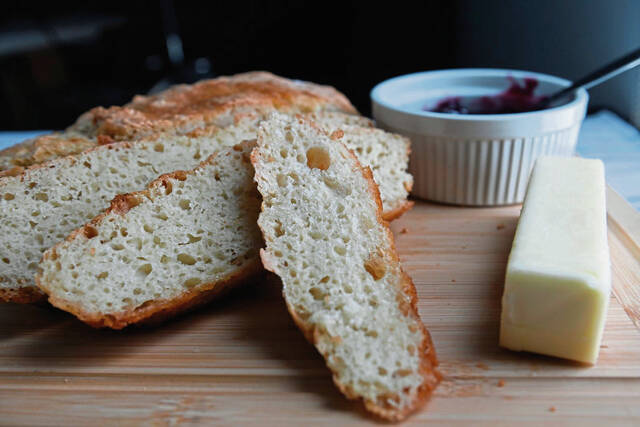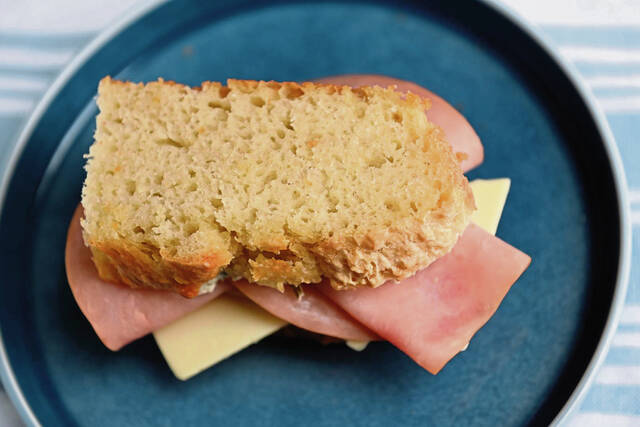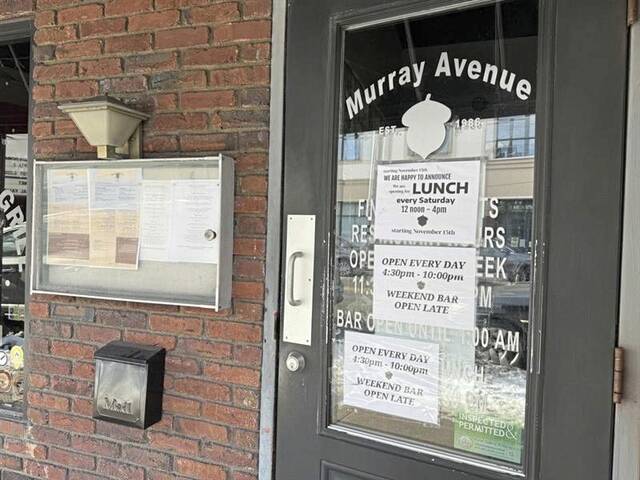Is there anything better than a good, crusty loaf of sourdough bread?
It’s the perfect pairing for a bowl of homemade soup, whether it be tomato, potato, beef stew or another variety. The better the soup, the better the marriage.
It’s a hearty option that adds weight to a sandwich. Toasted for a BLT, grilled for a patty melt or cold with ham and cheese, homemade sourdough brings class to classics.
Partnered with pasta, egging on eggs, crusted for croutons — it’s all delicious. But with a fresh loaf, there’s really little better than the basics of butter or jam.
All of it is within your reach. It just takes a little advanced planning.
OK, it’s more than a little planning. Sourdough — as many people learned during the baking frenzy of the early days of the pandemic — is an exercise in patience. If you want to make a loaf of most bread, you have to be prepared to invest hours. To prep a sourdough starter, it’s a week or two.
A starter is the magical blend that takes the place of active yeast. Instead of the dry, tawny granules poured from a paper envelope or spooned from a jar, the starter cultivates natural yeasts from the environment. It’s why San Francisco’s signature loaves taste different from a rustic product from the south of France or Tuscany.
They all start simply with just equal parts flour and water. That’s equal weight, not equal volume. Start with four ounces of each, so about 3⁄4 cup flour to 1⁄2 cup water. All-purpose flour is fine, but so is whole wheat. Mix it up in a good-sized glass container, cover it lightly and set it aside.
After 24 hours, stir it up and feed it the same amount of flour and water again. Cover and set aside again. Keep it warm. Yeast is finicky. Repeat these steps the next two days.
On the fifth day, if your starter has gotten foamy and is smelling a little sour and a little bready, it’s time to change things up. Divide in half. You can use one part to make your first loaf. Feed the other half again and keep setting aside.
This is also when you have to decide how much time you want to invest in your sourdough. Maintaining it can be a chore. If you have a large family to feed, keep it warm on the counter, and you can make fresh bread daily. If baking will be more of an every-week or so task, you can put it in the fridge and slow down its development to a more manageable pace.
Is this all too much work? Make an overnight loaf of no-knead bread that mimics the flavor and texture of sourdough without the investment of time and effort by replacing the wild yeast with a small amount of instant, but builds taste by developing over 12 to 24 hours.
Whether you spend a week or more cultivating the perfect artisanal sourdough or shortcut your way to a loaf of sour-faux, it’s a delicious way to invest some time.
Sourdough oatmeal bread
3/4 cup sourdough starter
1 3/4 cups warm water
2 tablespoons brown sugar
1/2 cup quick oats
4 cups all-purpose flour (bread flour will work, too)
2 teaspoons kosher salt
^
Mix starter with water and sugar. Add oats and stir to combine. Using a mixer with a dough hook — or just a mixing bowl and a dough whisk — add flour and salt until a dough forms. Cover and rest for about an hour. Punch down and knead lightly, forming into a ball. Rest until doubled. In a warm location, this might be two to three hours. If it’s colder, it could be overnight. (This might be an argument for the no-knead cheater dough.)
Form into a loaf or two. Place on parchment paper dusted with flour or oatmeal in a cast iron Dutch oven or on a sheet pan. Rest for another 30 minutes to an hour. Using a sharp knife (or a baker’s razor if you have one), cut a slit in an oblong loaf or an X in a round one. This helps the dough expand without blowing up into odd shapes.
Bake in a preheated oven at 450 degrees. If you are baking in a Dutch oven, cover and bake for about 30 minutes, then uncover for another 30 or until the bread is browned and crusty. If you are using a sheet pan, aim for 40 minutes and then check, adding time as necessary.
The hardest part? When you take your bread out, do not cut it. Don’t rip off that one little corner that is just begging to be tasted. Your bread needs to cool with all its steamy goodness in one uncut mass or it won’t cut right and you will be disappointed. Let it set for an hour or more. Your bowl of soup, sandwich or just a delicious slice with butter and jam will be worth it.





























